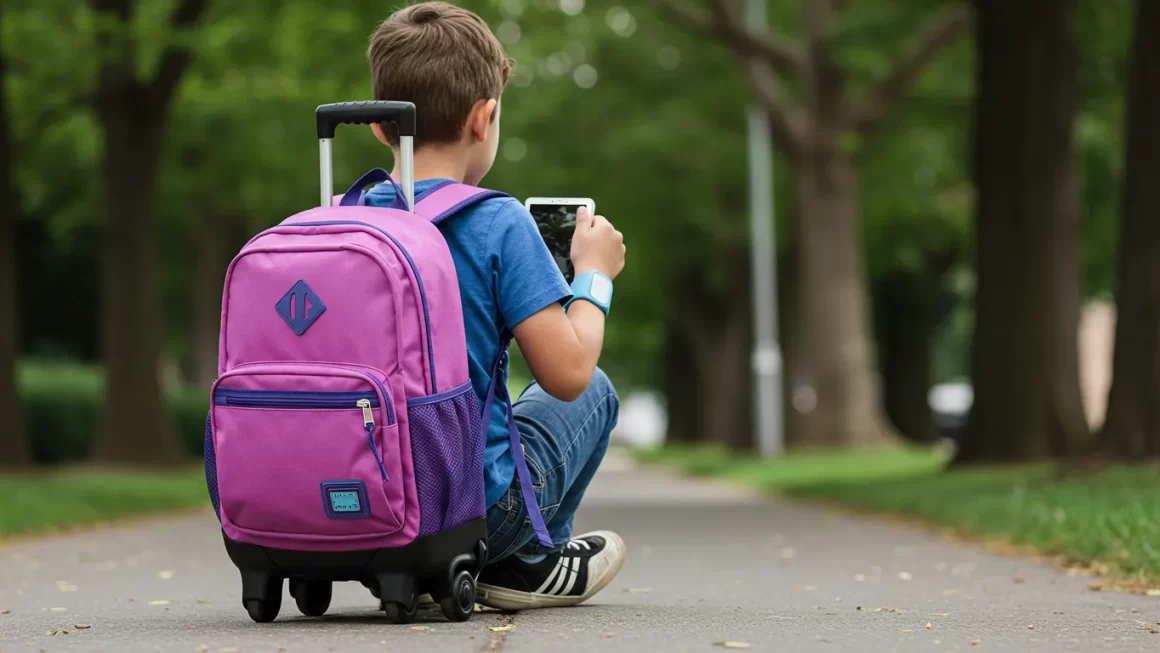Table of Contents
Backpacks have long been the go-to for carrying books, supplies, and snacks to and from school. But in recent years, concerns about posture, back pain, and even safety have prompted parents and students to look for alternatives. Fortunately, there are plenty of fun, safe, and stylish options available that offer both function and flair. From rolling bags to wearable tech, students today have a variety of backpack substitutes to choose from.
Why Consider Alternatives to Backpacks?
Backpacks can sometimes do more harm than good, especially when overloaded. Heavy backpacks may cause poor posture, spinal strain, and shoulder discomfort. Younger students, in particular, are at higher risk due to their developing bodies.
Moreover, crowded school hallways and buses can make maneuvering with a backpack a challenge. Alternatives can provide safer, more ergonomic, and even trendier ways to carry school essentials.
Rolling Bags: Wheels for the Win
Rolling bags, or wheeled backpacks, are one of the most practical alternatives. They reduce the strain on a child’s back by transferring weight to the ground. Students simply pull the bag using a handle, much like a carry-on suitcase.
These bags often come with multiple compartments and are available in various fun designs, from cartoon characters to sporty themes. They are ideal for students with heavy books or long walks to school.
Safety tip: Look for rolling bags with retractable handles and padded corners to minimize tripping hazards. Go Here: Is a car wrap a good idea?
Messenger Bags: Sleek and Stylish
Messenger bags have gained popularity among older students for their modern and minimalist look. Worn across the body, they allow for quick access to items and keep weight more evenly distributed than a traditional one-shoulder tote.
These bags come in different materials, including canvas, nylon, and leather. Some even offer padded compartments for laptops or tablets, making them great for high school and college students.
While messenger bags shouldn’t be overloaded, they’re perfect for carrying light to moderate loads with style.
Tote Bags: Lightweight and Trendy
Tote bags are a great alternative, especially for students who don’t need to carry too many books. These bags are lightweight and come in endless styles and prints, allowing students to express their personalities through their school gear.
Cotton totes are eco-friendly and washable, while structured totes with reinforced bases and internal pockets provide better durability and organization.
They’re a favorite for art or design students who carry sketchbooks or creative supplies.
Crossbody Sling Bags: Compact and Cool
Crossbody sling bags are smaller than backpacks but offer just enough room for essential items like notebooks, pens, and a water bottle. Worn diagonally across the body, these bags stay secure and are easy to carry without causing shoulder fatigue.
They’re ideal for middle or high school students who travel light or change classes frequently. Plus, their compact size makes them a favorite among students who bike or walk to school.
Laptop Briefcases and Hybrid Bags
For tech-savvy students, laptop briefcases or hybrid bags with tech compartments are practical choices. These come with padded sections to keep electronics safe and organized, along with extra space for chargers, stationery, and folders.
Some modern designs can be carried as a briefcase, worn as a crossbody, or even converted into a backpack for days when more support is needed.
These versatile bags cater well to students who attend schools with digital classrooms or bring their own devices daily.
Also Read: How Long Is a Century? Unveil the Shocking Answer Here
Chest Rigs and Utility Vests
In fashion-forward circles, chest rigs and utility vests are gaining attention. Originally designed for outdoor sports and photography, these wearable organizers have found a niche among students who prefer hands-free, body-hugging gear.
Though not meant to carry textbooks, they’re great for smaller schools or specialized classes where only a tablet, planner, or a few tools are needed. They offer easy access and distribute weight evenly across the chest and shoulders.
Satchels: A Vintage Touch
Satchels offer a timeless look that appeals to students with a vintage or academic aesthetic. Usually made from leather or faux leather, they include buckles or magnetic clasps and are often seen in university settings.
These bags pair well with uniforms or dress codes and are a nod to classic student life. Satchels are perfect for carrying notebooks, documents, and a few personal items—just don’t expect them to handle gym gear or lunch boxes.
Fanny Packs and Waist Bags: For Essentials Only
While not meant for carrying all school supplies, fanny packs or waist bags are ideal for essentials like phones, wallets, keys, and even small snacks. For students who already use a locker or don’t need to bring many items to class, this minimalist option can be a fun and functional alternative.
They come in sporty, street-style, and designer versions—making them as fashionable as they are functional.
Safety Considerations When Choosing Backpack Alternatives
While exploring different options, safety should always be a top priority. Here are a few tips to keep in mind:
- Weight distribution: Choose bags that evenly distribute weight or offer padded straps and ergonomic designs.
- Reflective materials: For students walking or biking to school, reflective strips or bright colors can enhance visibility.
- Secure zippers and closures: To protect personal items, ensure the bag has secure closures.
- Size-appropriate designs: Younger students should carry smaller, age-appropriate bags to avoid strain.
Making the Transition Easier
Switching from a traditional backpack to an alternative can be a big change for a student. To ease the transition:
- Let the student help pick the style they like.
- Do a “test pack” to see how the items fit and feel.
- Make sure the school permits alternatives to backpacks, especially if it has dress codes or storage requirements.
When to Stick With a Backpack
Despite all the cool alternatives, there are times when a backpack is still the best choice. If a student carries many books, plays sports after school, or needs to bring lunch, a good ergonomic backpack with padded shoulder straps may still be the safest and most convenient option.
However, switching things up even once or twice a week with an alternative bag can provide relief and give students a sense of personal style.




